China collections, antique silver cups, pretty tea sets, random oddments, traditional “brown” furniture — we all have those heirlooms and antiques that we let sit in cabinets or stow away in the attic. But you can incorporate these old items into your daily life in exciting new ways. From creative displays to inventive tablescapes, family treasures can be re-invented in modern settings, and prolific style author and design anthropologist Susan Sully is showing us how, with 10 tips for gracefully incorporating heirlooms and antiques into your daily life and home decor.
“Antiques add the touch of time and the human hand. Every dented baby cup, mended tablecloth, perfectly — or imperfectly — preserved piece of silver or porcelain tells a story that began long ago and hasn’t ended yet,” says Susan, whose most recent gorgeous coffee table book, Past Present: Living with Heirlooms and Antiques, is a visual feast of home interiors that gracefully intertwine old and new. “There are no rules about living with them, except to take what’s old and keep it young by making it part of daily life.” From a French neoclassical-style mansion to a mountain cottage in Highlands, North Carolina — in styles both rustic and refined — Susan shares vignettes, arrangements, tablescapes and creative displays from her new book, which seamlessly and elegantly illustrate her 10 tips for living with heirlooms and antiques.
Susan Sully’s 10 Tips for Living with Heirlooms & Antiques
1. Don’t take things too seriously.
Yes, these are your treasured family heirlooms and you don’t want to paint over the romantic patina of a gorgeous piece of timeworn furniture. But by the same token, if you have chairs just collecting dust in the attic because you do not like their color or upholstery, by all means, do what it takes to make them new and interesting! Think outside of the box like interior designer and colorist Beverly Field did with this Louis XV chair she reupholstered in a bright shade of cerise. This gives the chair a modern and striking twist that definitely makes an impression.

2. Put small things together.
“I learned many new words for knickknacks while working on this book,” says Susan. “Bibelots, whatnots or oddments – when you have a collection of these objects, how do you arrange them without creating clutter and visual chaos?” Consider the example of Chris Howard and Carey Pickard, two preservationist who have a strong sense of material history that translates into a passion for the way objects embody history. The two surround themselves with things that don’t just look good, but also have personal meaning. Covering a table with objects picked up on travels, gifts from friends or purchases from artists, including the renowned Howard Finster, they have created a three-dimensional scrapbook that reminds them of places they’ve been and people they’ve met. Carey says what’s most important to them is the relationships between these things and memories they hold. “Their house is like a museum where you are invited to touch things, to pick up and explore the items,” says Susan.

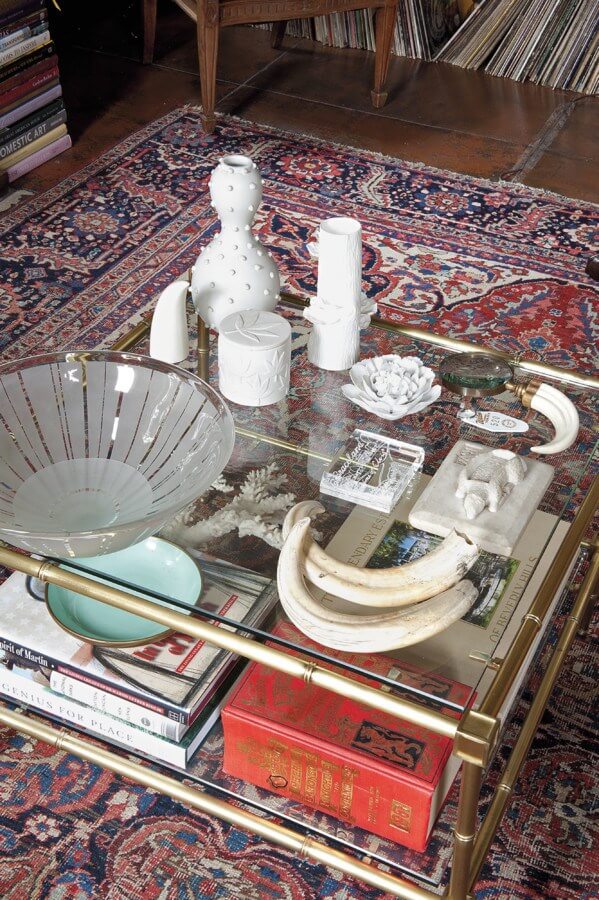
3. Keep things in sight.
“Don’t hide things away,” says Susan. Take all of your vintage cocktail glasses, julep cups, antique silver goblets and china, and treat them like the cherished objects that they are. Whether you put them behind glass cabinetry or atop simple shelves, this is perhaps the best way to show your antiques and heirlooms love.
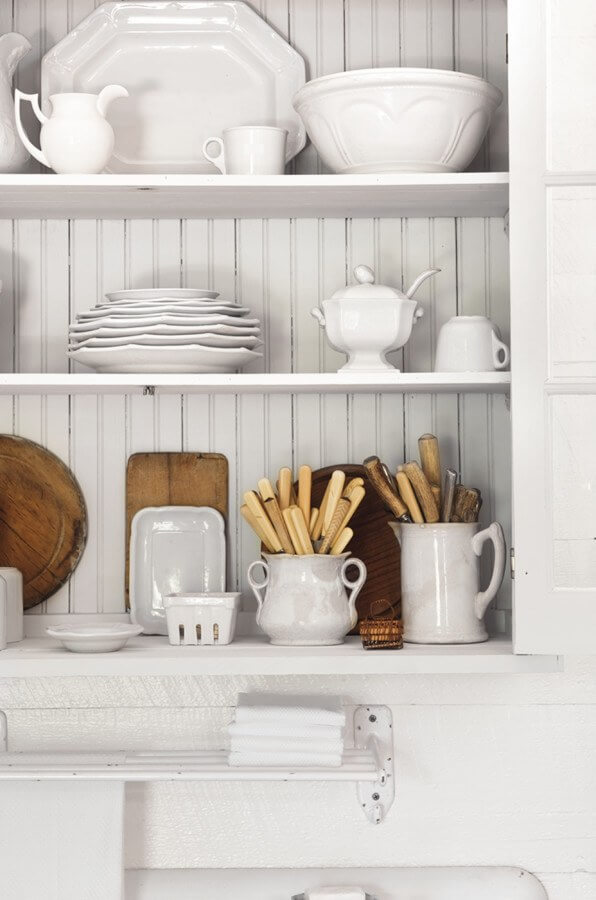

4. Serve tea.
One of Susan’s favorite tips for using heirlooms and antiques came from interior designer and style author Florence de Dampierre, who advises people to simply serve tea.“There is very little pressure or preparation,” says Florence. “How hard is it to boil water and put some dried fruit and cookies on a plate?” Florence uses her fine French porcelain tea set, a family heirloom, to entertain friends. “It’s a simple and elegant way to show off your antique tea sets and linens,” says Susan.
!["A fine French porcelain tea set that belonged to [Florence de Dampierre's] grandmother lends an elegance to the tea tray set on her grandfather’s 19th-century mahogany game table," says Susan. "A fine French porcelain tea set that belonged to [Florence de Dampierre's] grandmother lends an elegance to the tea tray set on her grandfather’s 19th-century mahogany game table," says Susan.](https://styleblueprint.com/wp-content/uploads/2016/06/SB-BHM-Susan-Sully-Past-Present-11.jpg)
5. Collect interesting flatware.
Take your tablescape to the next level with intriguing antique flatware. Perhaps you have a mixture of miscellaneous cutlery — from coin silver punch ladles to bone-handled knives. Consider mixing and matching for an interesting table setting. Interior designer and style author Susan Ferrier’s collection includes this striking mix of flatware with both bone tips and silver handles. “She has an eye for the eccentric and the pieces that defy expectations,” says Susan.
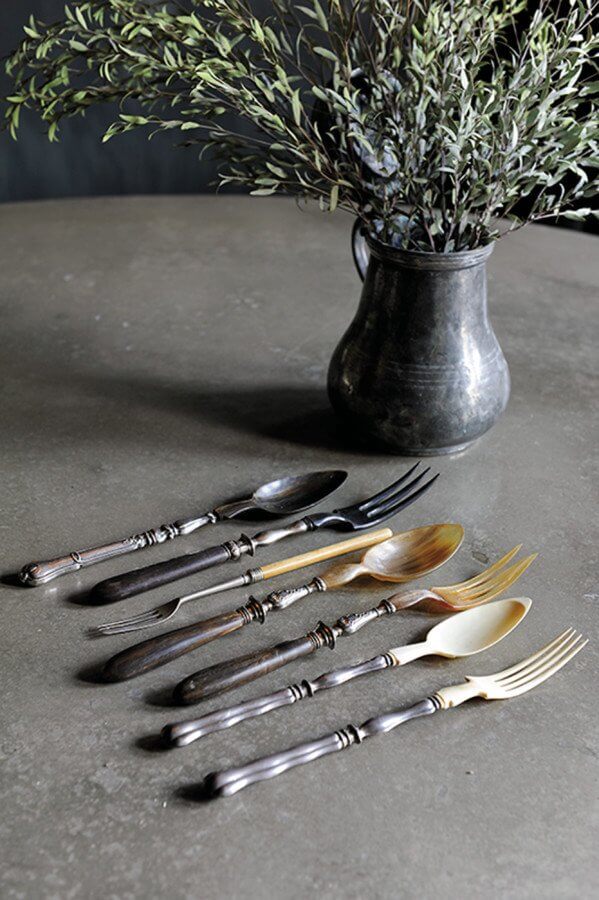
6. Find new uses for old things.
Get creative with how you use your antiques. Snip a camellia from your front yard and display it in an antique drinking vessel for an arresting vase. Or combine elegant glassware with antique furniture in a rustic environment, like this vignette in the entrance hall of a two-hundred-year-old family farmhouse in the Blue Ridge Mountains. “They’ve taken a fairly primitive piece of furniture and combined it with finer things to create a relaxed elegance,” says Susan. “Topped with beautiful cut and etched glass, a decanter, and wine coolers and housing the family’s rubber boots below, it’s a perfect example of putting an antique to good use.”
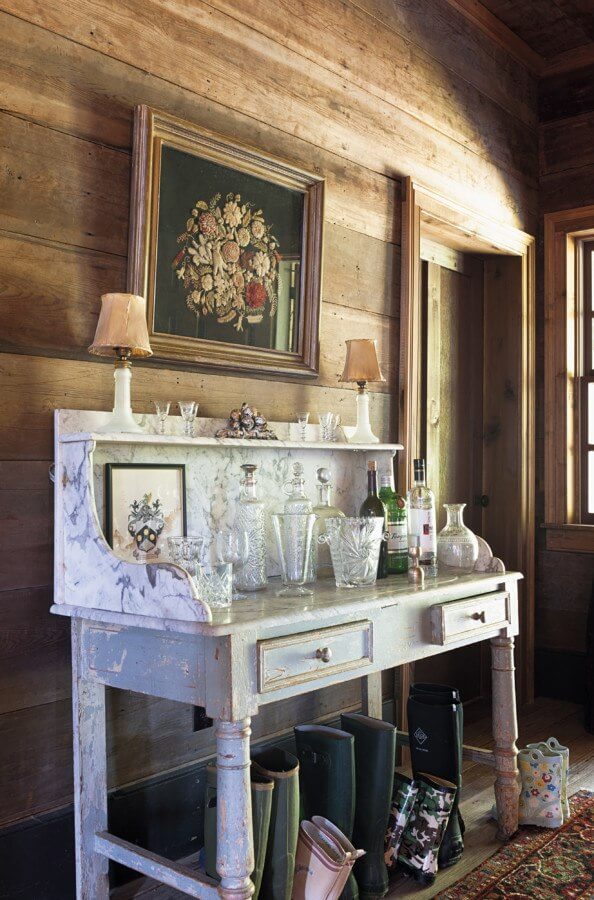

7. Don’t be afraid of brown furniture.
“People often denigrate ‘brown furniture,’ but I predict that brown furniture is going to make a comeback,” says Susan.“This is the time to buy traditional dark wood furniture, whether antique or reproduction.” This traditional mahogany inlaid lowboy anchors an artistic hallway composition. And mid-century modern pieces, or “light brown furniture,” is all the rage these days. Artistic, modern upholstery gives the 1950s Danish chair below a fresh, updated look.

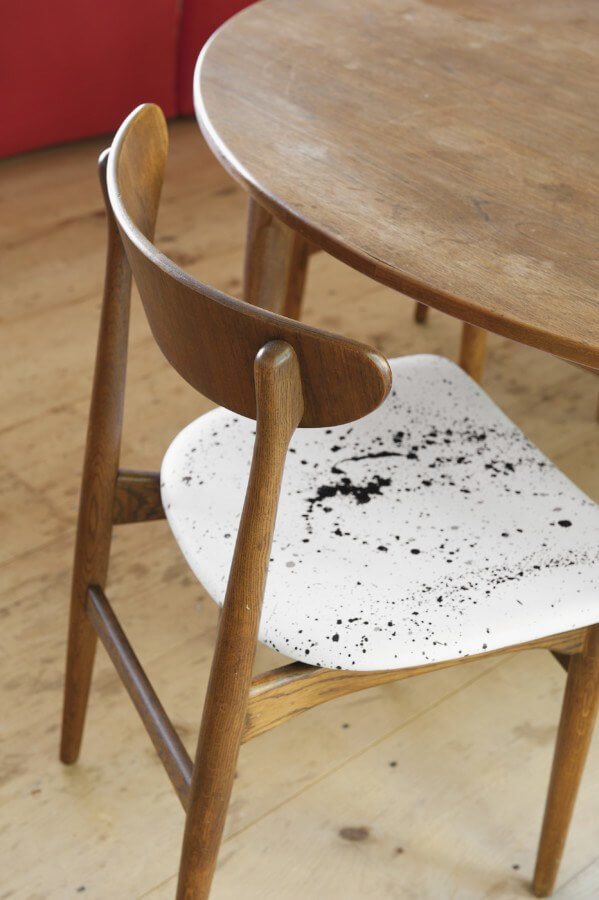
8. Use antiques as accent pieces in a contemporary setting or do the opposite.
Paris-born interior designer Florence de Dampierre was once named by W magazine as one of the best-dressed women in the world, and her signature style and good tastes are on full display in this chic conservatory. The room’s elegant white-and-lavender palette is complemented by contemporary furnishings, including a tree-trunk-style coffee table, a comfortable white sofa and geometric rug designed by Florence. This luminous setting allows antique chairs with dark, lustrous wood to stand out. “Adding something unusual — an unexpected object or color — makes a room interesting,” says Florence.
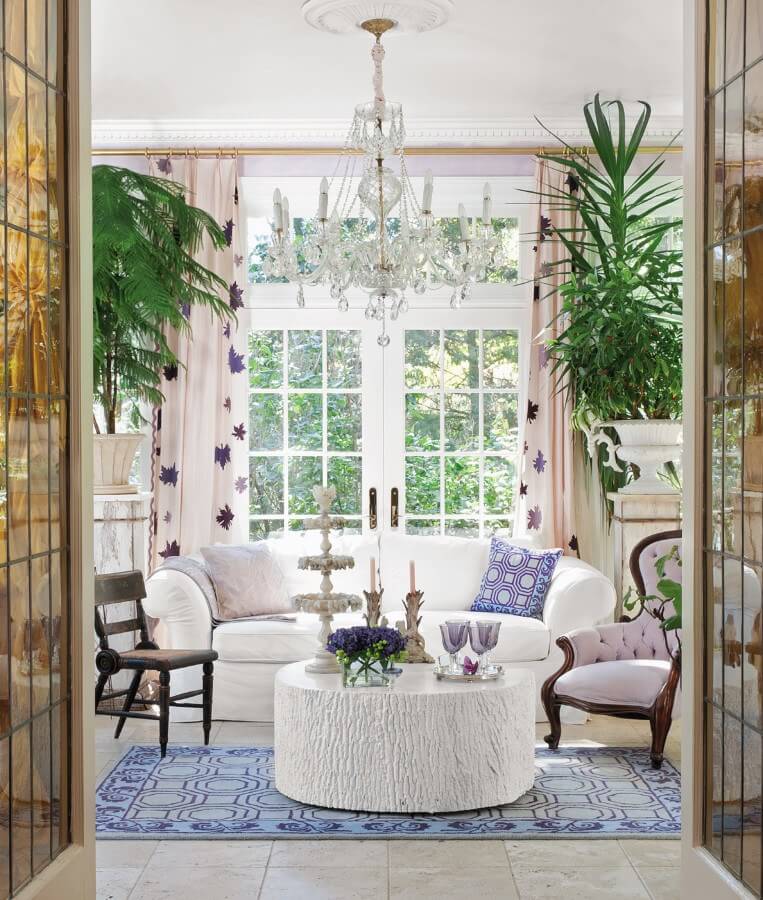
9. Don’t be matchy-matchy.
Mix antiques and heirlooms of different styles and from different eras for rooms and tabletop compositions that refresh the eye and the imagination. You are bound to see familiar pieces in a new light. One clever way to mix and match is to group disparate items by color. In the East Hampton weekend home of fashion executives Charles Keller and Glenn Purcell, collections of tableware abound. “These cranberry glass bowls, pieces of pink-and-white English transferware, and vintage linens are among the humbler fruits of the residents’ antiquing expeditions,” says Susan. Mixing like-colored dishes in unexpected groupings like this one can create an eye-catching tablescape.
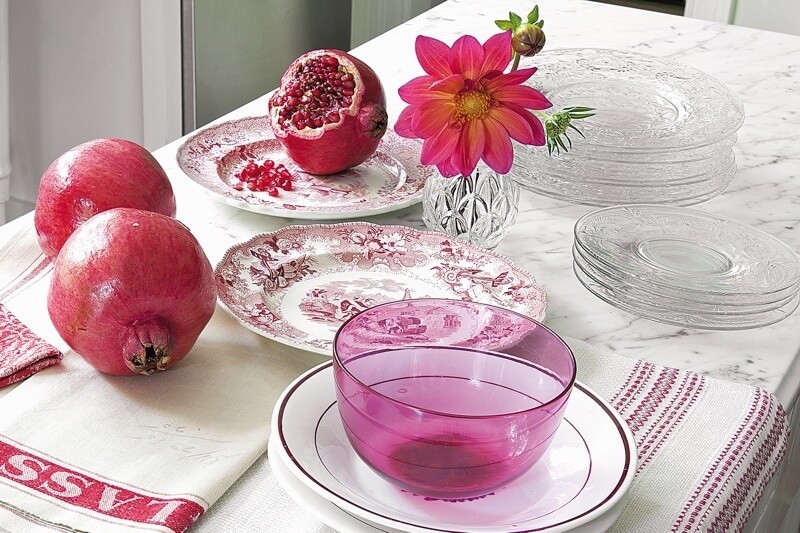
10. Hang tight arrangements on a stolen wall.
“If you hang the arrangement tightly enough, you can combine just about anything. While the composition itself becomes part of the artistry, the eye is also drawn to the individual items,” says Susan. “When the arrangement is so artistic, then you don’t care if the individual pieces are of the same medium or not!” Take an overlooked, or “stolen,” wall, and use it as the backdrop for a striking display of your favorite framed treasures. “New York-based graphic designer Eric Mueller, a longtime friend of the homeowners, created this compact arrangement of miniature artwork, objects and memorabilia — dubbing it ‘The Wall of Smalls,’” says Susan of this display, which is filled with bits of East Hampton history. “Featuring locally made paintings and memorabilia from visiting friends, the montage is a celebration of place and time.”
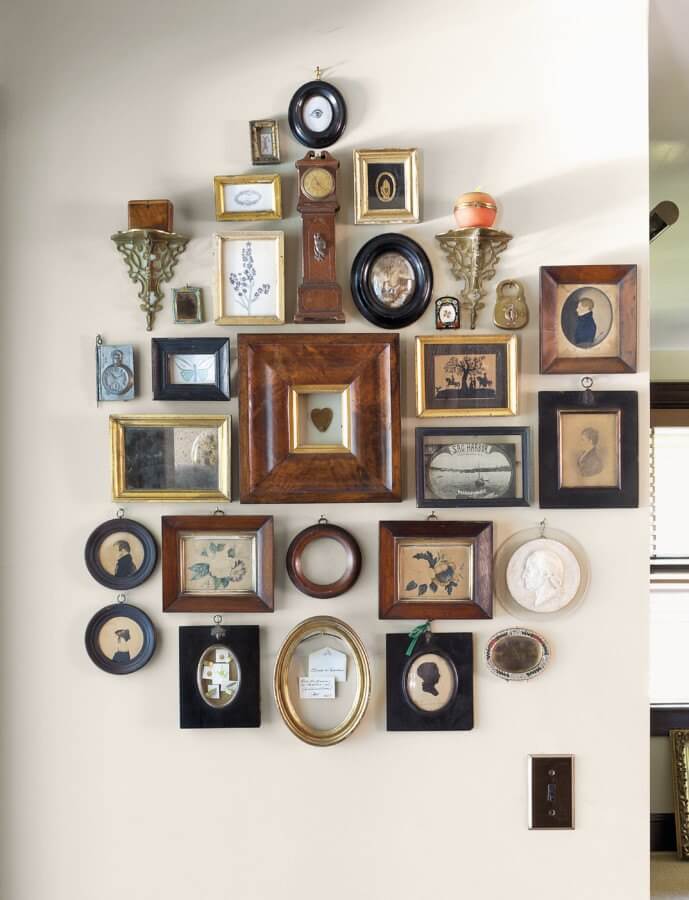
So, dust off your heirlooms and antiques — or go on a hunt for some unique new finds — and put them to good use!
Thank you, Susan, for sharing your wonderful tips!
And thank you to Monacelli Press for the gorgeous images from Susan’s new book, Past Present: Living with Heirlooms and Antiques!
**********
Guess what?! StyleBlueprint is launching in Charlotte, NC, this spring! Want to be among the first to know? Click here to sign up!







